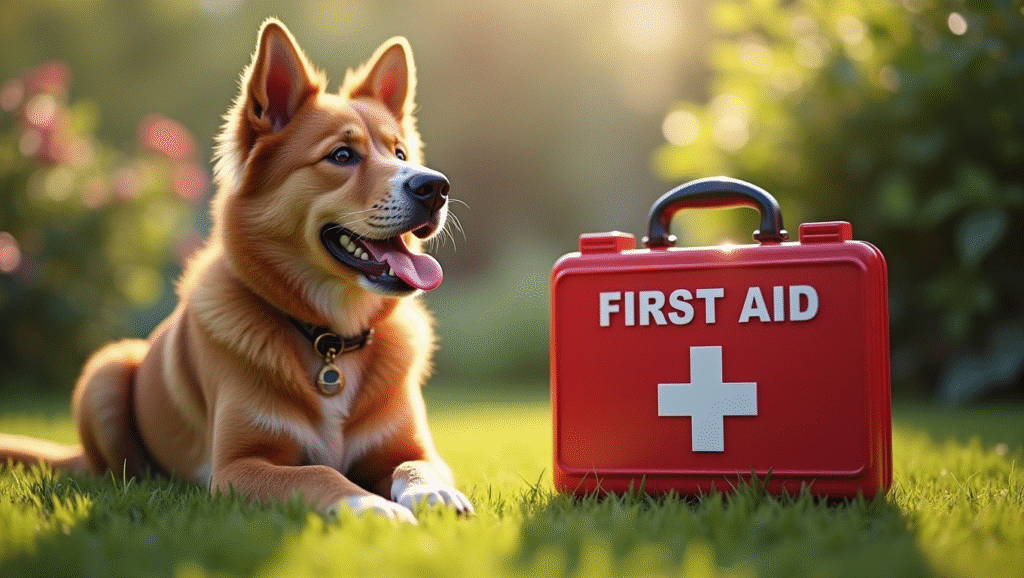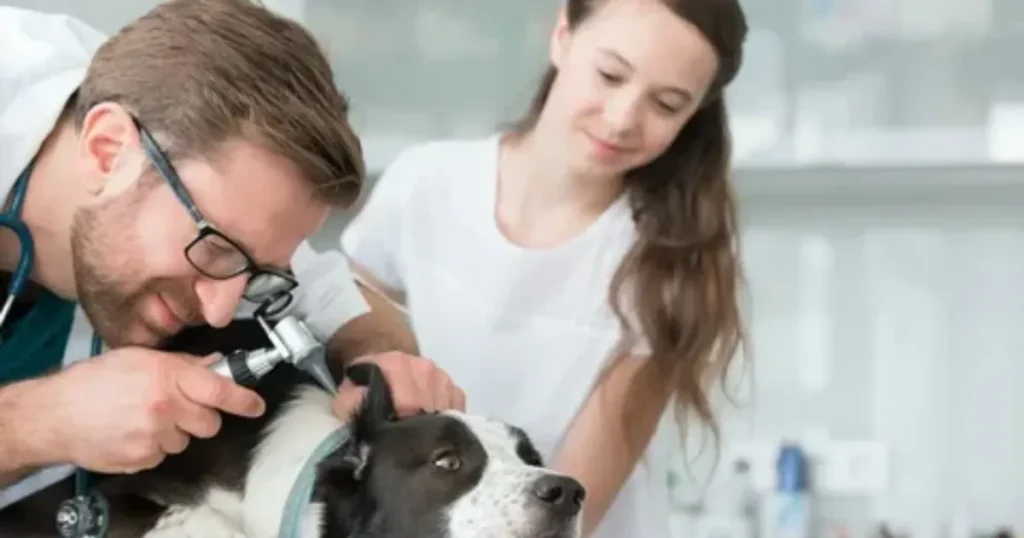Expert Tips for Dealing with Dog Accidents can make life a lot easier for you and your furry friend. Doggie accidents happen—whether you’re training a puppy or dealing with an older dog.
Understanding why they happen and how to handle them is key. In this article, we’ll explore the best ways to manage those messes, train effectively, and keep your home fresh.
You’ll be ready to tackle any accident that comes your way!
Key Points to Remember
- Always stay calm when accidents happen.
- Clean up accidents quickly and properly.
- Use positive reinforcement for good behavior.
- Know your dog’s signs for needing to go out.
- Create a routine for bathroom breaks.
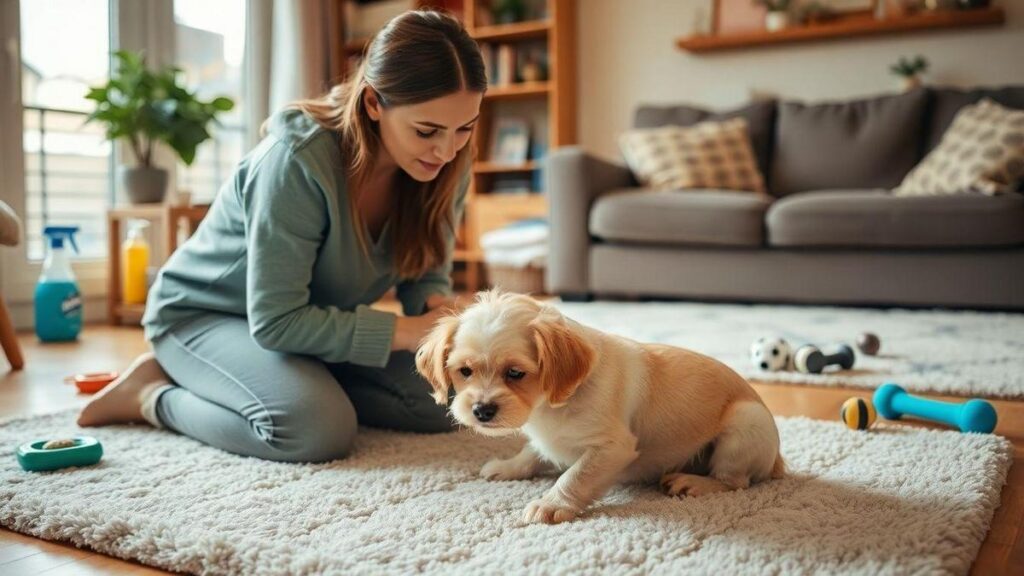
Summary
Understanding Dog Accidents: What You Need to Know
Let’s face it: accidents happen. Whether it’s a puppy that just can’t hold it yet or an older dog that’s having a tough time, dog accidents are part of being a pet parent. Understanding why these accidents occur is the first step in dealing with them effectively.
Dogs can have accidents for many reasons. Sometimes, it’s a medical issue. Other times, it’s just a lack of training or a sudden change in their environment. For example, if you’ve recently moved or introduced a new pet into the home, your dog might feel stressed, leading to accidents.
Also, keep in mind that dogs communicate through their behavior. If they’re acting out, it might be because they’re anxious or scared. So, when you see an accident, try to think about what might be causing your furry friend distress.
Accidents can also happen if your dog is simply too excited. You know how it is when you come home after a long day. Your pup is bouncing off the walls, and in their excitement, they might forget about their potty training.
Understanding these factors can help you approach the situation with more patience and empathy.
Expert Tips for Dealing with Dog Accidents at Home
So, your dog has had an accident. What now? Here are some expert tips for dealing with dog accidents to help you handle the situation calmly and effectively.
First, don’t punish your dog. It’s easy to feel frustrated, but yelling or scolding won’t help. Your dog won’t connect the punishment with the accident. Instead, they might just become scared of you.
Instead, focus on cleaning up the mess. Use an enzymatic cleaner designed for pet stains. These cleaners break down the proteins in pet waste, which helps eliminate odors that might encourage your dog to go in the same spot again.
Next, consider if your dog is getting enough bathroom breaks. Puppies need to go out more frequently than adult dogs. A good rule of thumb is to take your puppy out every hour, plus after meals and playtime. For adult dogs, every four to six hours is usually sufficient.
Lastly, keep a close eye on your dog’s behavior. If you notice signs that they need to go out, like sniffing around or circling, take them outside immediately.
Potty Training Advice for Puppies and Adult Dogs
Potty training can be a challenge, but with the right approach, you can make it easier for both you and your dog.
For puppies, consistency is key. Create a routine where you take them out at the same times each day. As mentioned earlier, puppies typically need to go out every hour, so don’t hesitate to take them out frequently.
When they do their business outside, reward them with praise or a treat. Positive reinforcement goes a long way in helping them learn.
For adult dogs, the process can be a bit different. If your adult dog is having accidents, it might be due to a medical issue, so a trip to the vet could be necessary. If they’re healthy, consider if they’re getting enough opportunities to go outside.
You might also want to retrain them by going back to basics. Take them out on a schedule and reward them for going outside. It might take a little time, but patience is essential.
Cleaning Pet Messes: Quick and Easy Solutions
Cleaning up after your dog doesn’t have to be a hassle. Here are some quick and easy solutions to make your life easier.
First, always have the right cleaning supplies on hand. An enzymatic cleaner is a must-have. You’ll also want some paper towels, rubber gloves, and a scrub brush.
When you find an accident, act quickly. Blot the area with paper towels to soak up as much liquid as possible. Avoid rubbing, as this can push the mess deeper into the fabric.
After blotting, apply the enzymatic cleaner according to the instructions. Let it sit for the recommended time to break down the mess. Then, scrub the area gently and rinse with water.
For carpets, consider using a carpet cleaner designed for pet stains. These can help lift the stain and odor more effectively than regular cleaners.
And don’t forget about your furniture! If your dog has an accident on the couch, use the same cleaning method. Just be sure to check the fabric care instructions first.
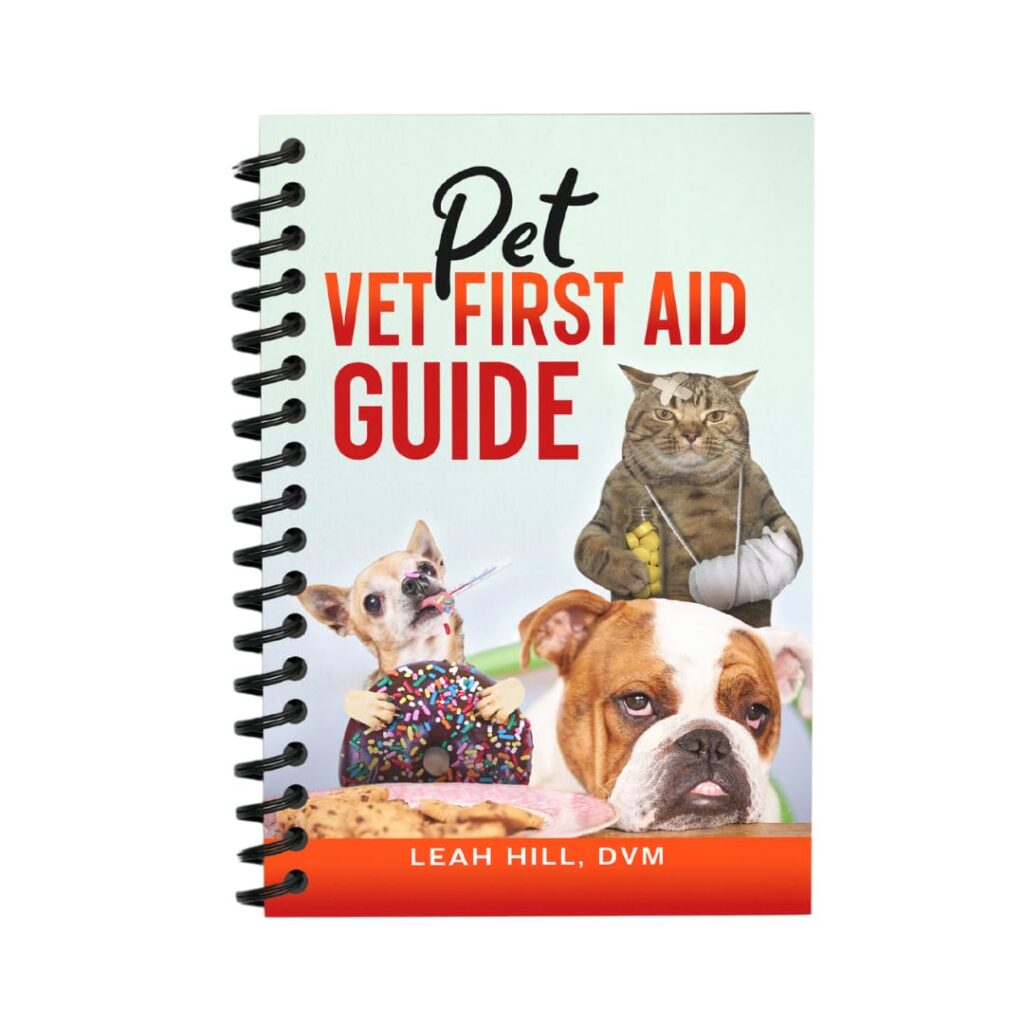
Effective Training Techniques to Prevent Indoor Accidents
Preventing indoor accidents starts with effective training techniques. Here are some strategies to help you keep your home mess-free.
First, establish a designated potty area outside. Take your dog to the same spot every time. This helps them associate that area with going to the bathroom.
Next, use a cue word or phrase. When you take your dog outside, say something like go potty. Over time, they’ll learn to associate that phrase with doing their business.
Consistency is also crucial. Stick to a routine for feeding and bathroom breaks. This will help your dog learn when to expect to go outside.
If your dog has an accident, clean it up without making a fuss. Instead, redirect them outside next time.
Finally, consider crate training. Dogs naturally avoid soiling their sleeping area, so a crate can help them hold it until they’re let outside. Just make sure the crate is the right size – big enough for them to stand up and turn around, but not so big that they feel comfortable going in one corner.
Dog Behavior Management: Recognizing Signs of Distress
Understanding your dog’s behavior is essential in managing accidents. Dogs can’t talk, but they do communicate through their actions.
So, what should you look for? Signs of distress can include pacing, whining, or excessive barking. If you notice these behaviors, it might be time to take your dog outside.
Also, pay attention to their body language. If your dog is sniffing around or circling, they might be looking for a place to go.
If your dog seems anxious or stressed, consider what might be causing it. Changes in the household, like a new baby or moving to a new home, can upset them.
Creating a calm environment can help. Provide a safe space with their bed and toys. This can be their go-to spot when they’re feeling overwhelmed.
Pet Hygiene Tips: Keeping Your Home Fresh and Clean
Keeping your home fresh and clean with a dog can be a challenge, but it’s definitely doable. Here are some hygiene tips to help you out.
First, establish a regular cleaning routine. Vacuuming at least once a week will help control pet hair and dander. If your dog sheds a lot, you might want to vacuum more often.
Consider using an air purifier. This can help reduce odors and allergens in your home.
Also, make sure to wash your dog’s bedding regularly. A good rule of thumb is to wash it every couple of weeks, or more often if they’ve had an accident.
Don’t forget about your dog’s toys! Give them a good wash every month to keep them clean and safe.
And if your dog has an accident, clean it up promptly to prevent lingering odors.
Dealing with Dog Stains: Best Products and Methods
When it comes to dog stains, the right products and methods can make all the difference. Here are some of the best options available.
For urine stains, enzymatic cleaners are your best bet. They break down the proteins in urine, which helps eliminate odors and stains. Look for a product specifically designed for pet messes.
For feces stains, you’ll want to first remove any solid waste. Then, use an enzymatic cleaner to treat the area.
If you’re dealing with vomit, start by removing any solid material. Blot the area with paper towels, then apply an enzymatic cleaner.
For carpets, always test a small, hidden area first to ensure the cleaner won’t damage the fabric.
And remember, patience is key. Sometimes, it takes a few treatments to completely eliminate a stain.
Puppy Accident Solutions: What to Do When It Happens
When your puppy has an accident, it can be frustrating. But don’t worry; it’s part of the learning process. Here’s what to do when it happens.
First, stay calm. Yelling won’t help your puppy understand what they did wrong. Instead, focus on cleaning up the mess.
Use an enzymatic cleaner to eliminate odors and stains. Follow the instructions carefully for the best results.
Next, take your puppy outside immediately. If they finish their business outside, reward them with praise or a treat. This reinforces the behavior you want to see.
If accidents keep happening, consider if your puppy is getting enough bathroom breaks. They might need to go out more frequently than you think.
Finally, be patient. Potty training takes time, and every puppy learns at their own pace.
Preventing Indoor Accidents: Creating a Safe Space for Your Dog
Creating a safe space for your dog can help prevent indoor accidents. Here’s how to do it.
First, designate a specific area in your home for your dog. This could be a cozy corner with their bed and toys.
Next, make sure this space is free from distractions. Keep it quiet and calm, so your dog can relax.
Consider using baby gates to limit your dog’s access to certain areas. This can help you keep an eye on them and prevent accidents in places you don’t want them to go.
And don’t forget about potty breaks! Make sure to take your dog outside regularly to give them the opportunity to relieve themselves.
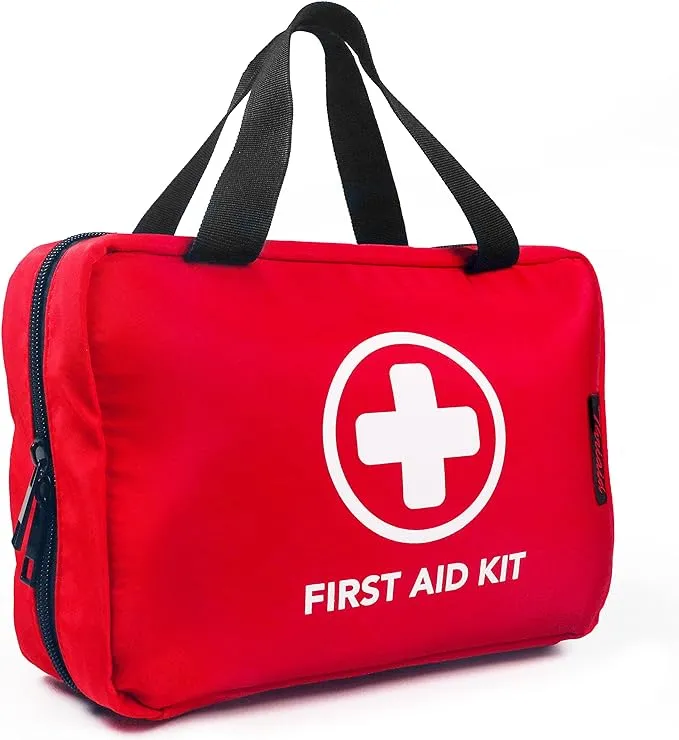
Conclusion
In the grand scheme of pet parenting, dog accidents are just a bump in the road. They may seem daunting, but with the right knowledge and tools, you can turn these little mishaps into learning experiences for both you and your furry companion.
Remember to stay calm, clean up promptly, and use positive reinforcement to encourage good behavior. By understanding your dog’s needs and creating a consistent routine, you’ll pave the way for a happier, healthier relationship with your pet.
So, don’t let the occasional accident get you down! Embrace the journey, and know that every step you take is a step towards a better understanding of your beloved dog. If you’re hungry for more tips and tricks, be sure to check out more articles at Tech Havela. Happy training!
Frequently Asked Questions
What should I do first after my dog has an accident?
First, stay calm. Clean the mess quickly. Use paper towels and an enzyme cleaner. This helps remove the smell.
How can I prevent my dog from having accidents indoors?
Take your dog outside often. Set a schedule. Praise them for doing their business outside.
What are some signs my dog needs to go out?
Watch for pacing, sniffing, or whining. If your dog seems restless, it’s time for a bathroom break.
Should I punish my dog for accidents?
No! Punishing doesn’t help. Instead, focus on training and positive reinforcement for outside behavior.
How can I help my puppy learn where to go?
Take your puppy outside regularly. Use a command like “go potty.” Reward them when they get it right!
Is it normal for older dogs to have accidents?
Yes, it can be normal. Older dogs may have health issues. Check with your vet if this happens often.
What are some expert tips for dealing with dog accidents?
Keep cleaning supplies handy. Stick to a routine. Stay patient. With time, your dog will learn!
**Sidnir Vieira**
Founder of TechHavela
A passionate pet and tech content creator, helping dog owners across the U.S. make smarter decisions for their furry friends.

